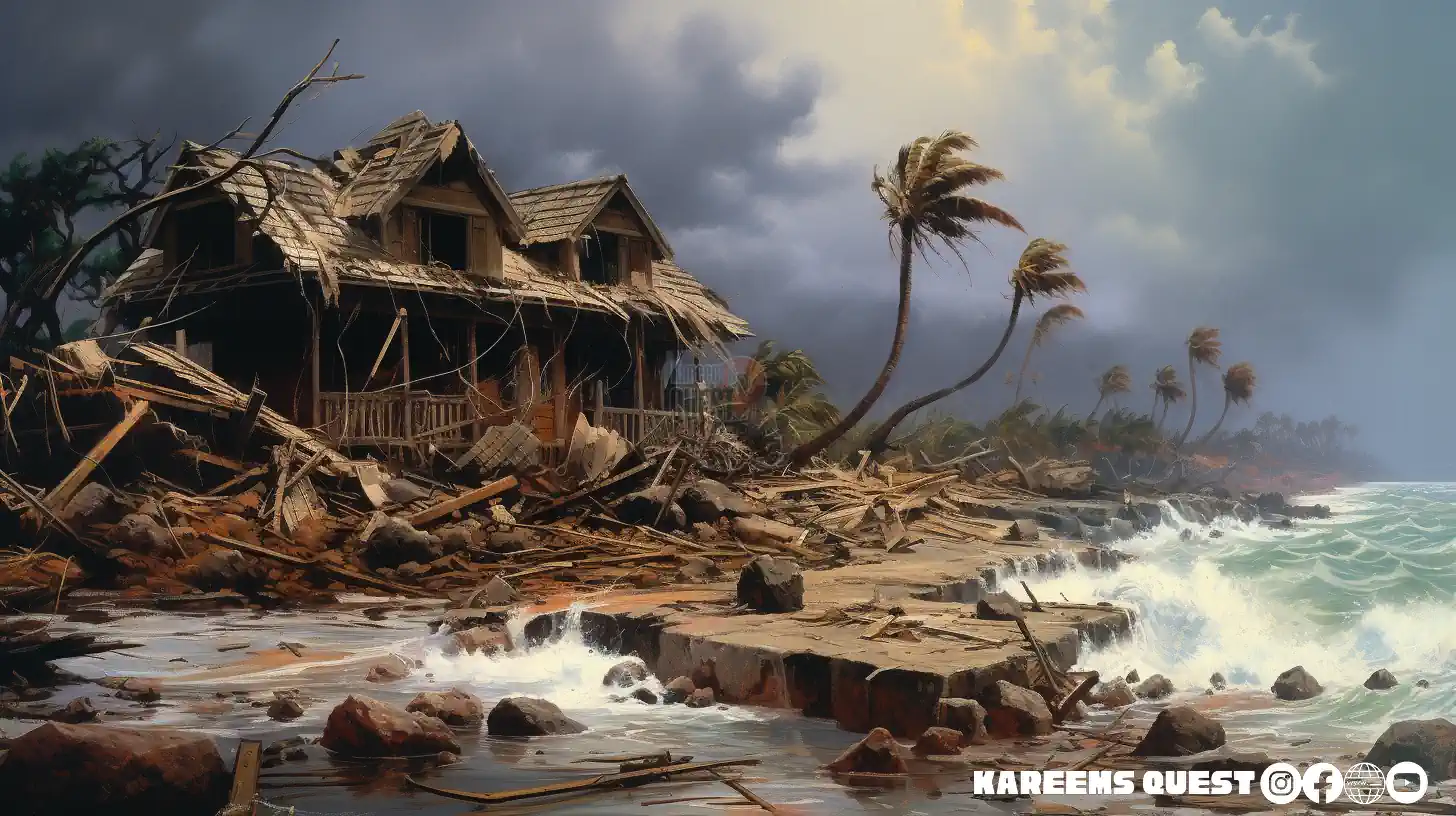Hurricane Beryl’s Impact on Jamaica: Hurricane Beryl In Jamaica

Hurricane beryl in jamaica – Hurricane Beryl, a powerful Category 1 hurricane, made landfall in Jamaica on July 5, 2023. The storm brought torrential rains, strong winds, and coastal flooding to the island, causing widespread damage and disruption.
Path and Intensity
Hurricane Beryl formed over the western Caribbean Sea on July 2 and rapidly intensified, reaching Category 1 strength on July 4. The storm continued to strengthen as it approached Jamaica, making landfall near the town of Savanna-la-Mar on the southwest coast.
The destructive force of Hurricane Beryl left a devastating trail across Jamaica. Amidst the wreckage, stories of resilience emerged, like that of Senator Tim Scott , who led recovery efforts with unwavering determination. His tireless work echoed the spirit of the Jamaican people, who refused to let the storm break their resolve.
As the winds subsided, the scars of Beryl remained, but so too did the unyielding spirit of those who had endured its wrath.
Affected Regions
The most severely affected regions of Jamaica were the southwest and central parts of the island, including the parishes of Westmoreland, Hanover, St. Elizabeth, Manchester, and Clarendon. These areas experienced the strongest winds and heaviest rainfall, resulting in significant damage to infrastructure, property, and the environment.
As Hurricane Beryl raged through Jamaica, its winds howled like a banshee, threatening to tear the island apart. But amidst the chaos, there was a beacon of hope: the story of James Wood , a baseball player who had overcome adversity to achieve his dreams.
Wood’s indomitable spirit inspired the people of Jamaica, reminding them that even in the darkest of times, hope could prevail. And as Beryl finally subsided, leaving behind a trail of destruction, the story of James Wood served as a testament to the resilience of the human spirit.
Infrastructure Damage
Hurricane Beryl caused widespread damage to Jamaica’s infrastructure, including roads, bridges, and power lines. The storm’s strong winds toppled trees and power poles, leaving many communities without electricity. In addition, flooding damaged roads and bridges, making travel difficult and isolating some areas.
Property Damage, Hurricane beryl in jamaica
Hurricane Beryl also caused significant damage to property in Jamaica. Homes and businesses were damaged by strong winds, heavy rain, and flooding. In some cases, entire buildings were destroyed, leaving residents homeless.
Environmental Damage
Hurricane Beryl’s heavy rains and flooding caused significant damage to Jamaica’s environment. The storm’s runoff carried sediment and debris into rivers and streams, polluting the water and harming aquatic life. In addition, the storm’s strong winds damaged trees and vegetation, contributing to deforestation and erosion.
Emergency Response and Recovery Efforts

In anticipation of Hurricane Beryl, the Jamaican authorities initiated a comprehensive emergency response plan. This included issuing timely warnings to the public, activating emergency response teams, and preparing evacuation centers.
During the hurricane, the authorities maintained constant communication with the public, providing updates on the storm’s progress and issuing instructions for safety. Emergency response teams were deployed to affected areas to assist with evacuations, search and rescue operations, and damage assessment.
Relief and Recovery Efforts
In the aftermath of Hurricane Beryl, government agencies, NGOs, and international organizations joined forces to provide relief and support to the affected communities. This included distributing food, water, and other essential supplies, providing temporary shelter, and offering medical assistance.
Long-term recovery efforts focused on rebuilding damaged infrastructure, restoring essential services, and providing financial assistance to affected individuals and businesses. These efforts were supported by both domestic and international aid.
Challenges and Successes
The recovery process from Hurricane Beryl presented several challenges, including widespread damage to infrastructure, disruptions to essential services, and the need for ongoing support to affected communities.
Despite these challenges, the recovery efforts were largely successful, thanks to the coordinated efforts of government agencies, NGOs, and international organizations. The provision of timely aid and the implementation of long-term recovery plans helped to mitigate the impact of the hurricane and support the affected communities.
Lessons Learned and Future Preparedness

The impact of Hurricane Beryl on Jamaica highlighted areas for improvement in disaster preparedness and response. Lessons learned include the need for more comprehensive evacuation plans, improved communication systems, and enhanced community resilience.
Existing disaster preparedness plans were effective in some aspects, such as early warning systems and the mobilization of emergency response teams. However, there were gaps in evacuation planning, particularly for vulnerable communities.
Evacuation Planning and Community Resilience
To enhance Jamaica’s resilience to future hurricanes, measures can be implemented in several key areas:
- Develop comprehensive evacuation plans that account for all vulnerable communities, including those in remote areas and with limited access to transportation.
- Strengthen community resilience through education and awareness programs, empowering communities to take proactive measures to prepare for and respond to hurricanes.
- Invest in infrastructure improvements, such as strengthening buildings and improving drainage systems, to reduce the impact of hurricanes on communities.